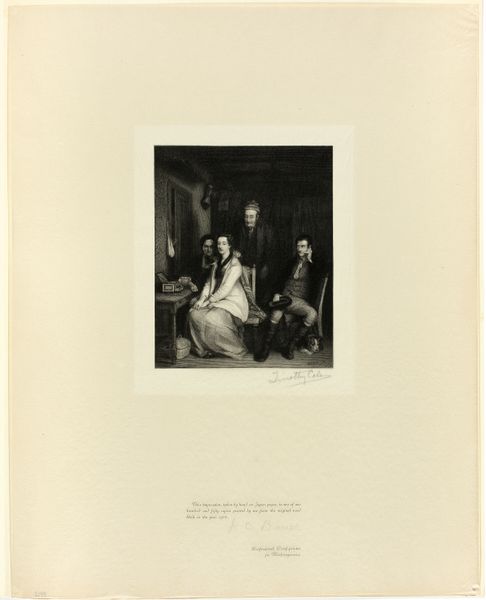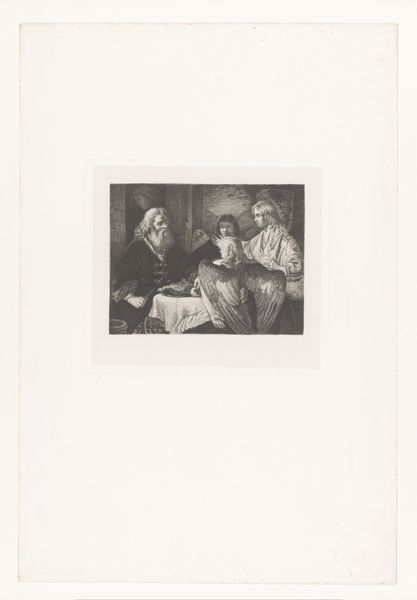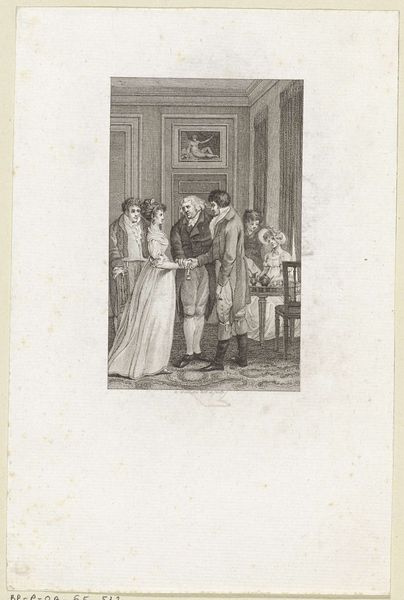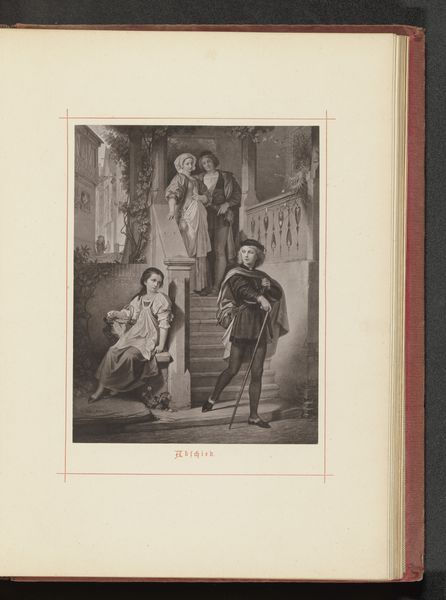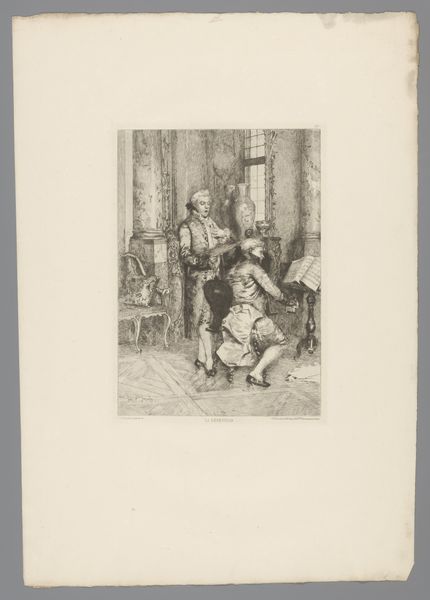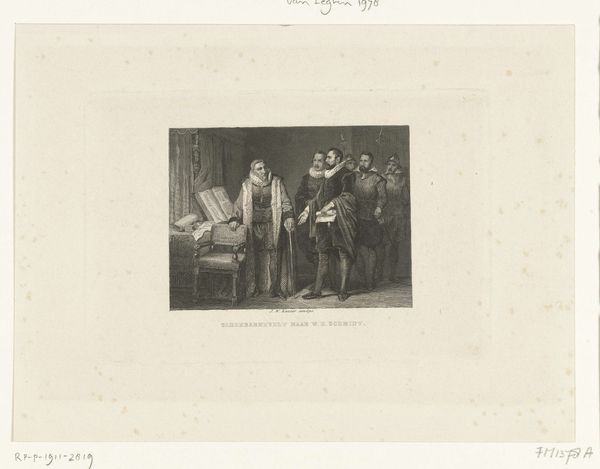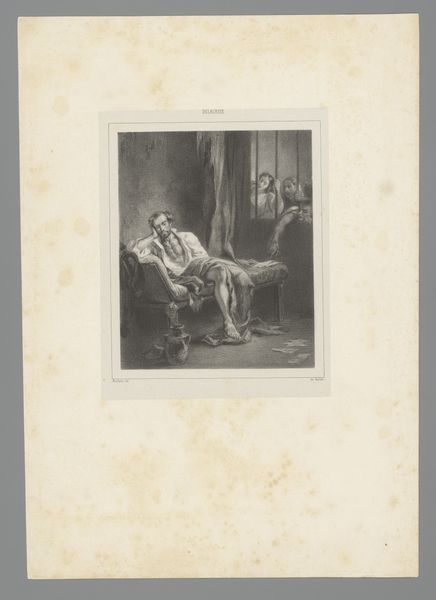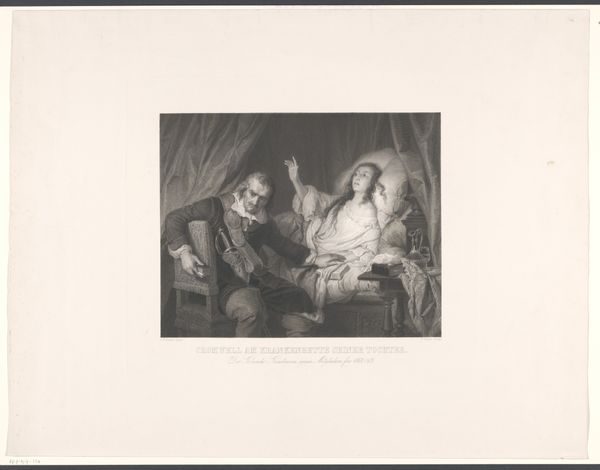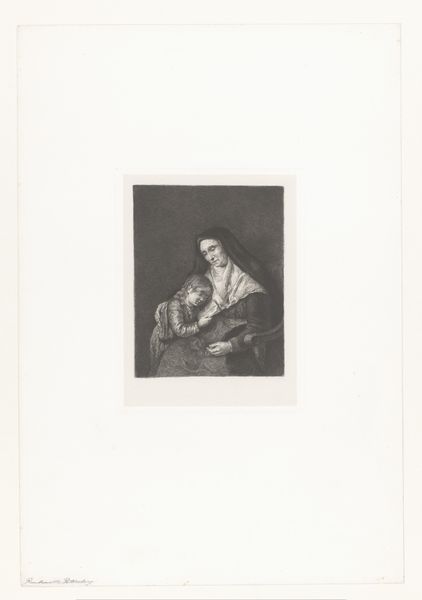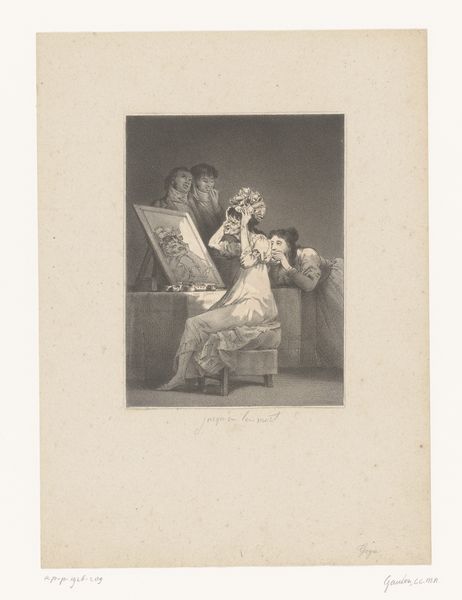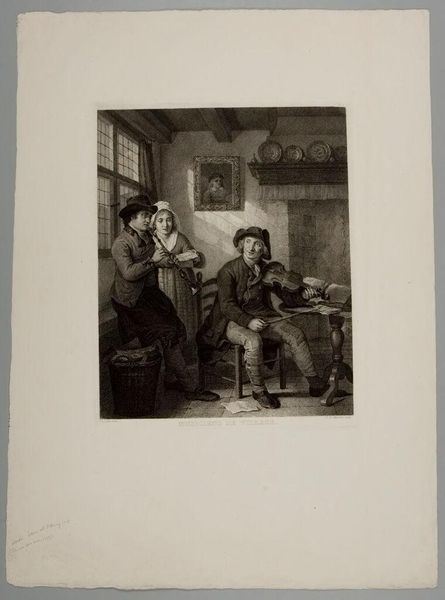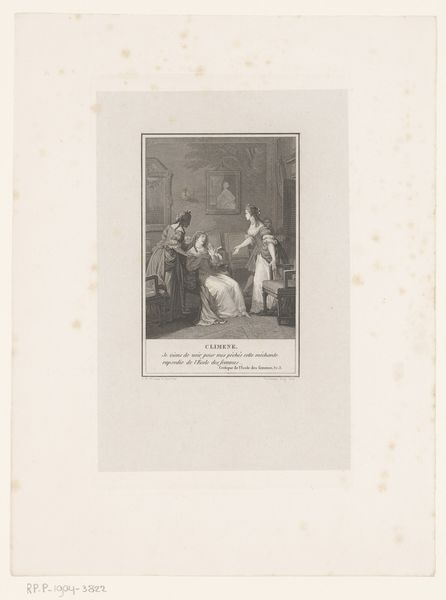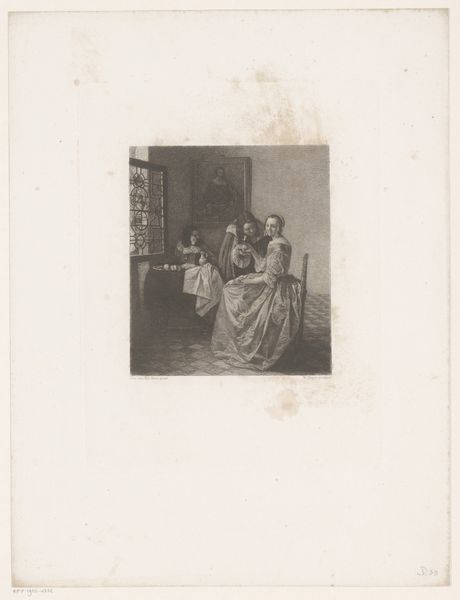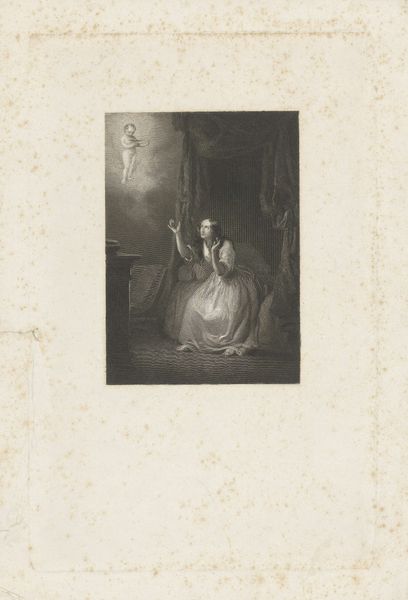
print, woodcut, wood-engraving
#
portrait
#
narrative-art
# print
#
woodcut
#
genre-painting
#
wood-engraving
Dimensions: 6 7/16 x 5 3/16 in. (16.35 x 13.18 cm) (image)12 x 9 7/16 in. (30.48 x 23.97 cm) (sheet)
Copyright: No Copyright - United States
Editor: Timothy Cole's "The Refusal," created around 1900. It's a wood engraving that presents a very stiff and formal gathering. What's fascinating is the almost palpable tension in the air; it makes me wonder about the narrative behind this particular gathering. What do you see in this piece? Curator: The stillness you sense is a powerful element. The symbols at play really speak to social expectations and suppressed emotions. Think about the positioning of each figure. The woman, centrally placed yet seemingly withdrawn, becomes a focal point of unspoken refusal. Do you notice how the light emphasizes her downcast eyes, contrasting with the hopeful gaze of the gentleman to the right? Editor: I do now that you point it out! There’s a box on the table in front of her… is that significant? Curator: Absolutely! The open box is reminiscent of Pandora's box or even a jewelry box representing a proposal or offer of marriage. What’s spilling forth? A societal expectation perhaps, or a future being rejected? The darkness behind them and the elders towering almost like looming figures adds a weight of generational expectation. How does it resonate with you now, seeing it through this symbolic lens? Editor: I see it now. It's not just a family gathering; it’s a negotiation with weighty implications. A societal and intergenerational struggle. Knowing how deeply symbolic imagery impacts our collective memory, it's kind of unsettling to think how such pressures might still exist today, even if in slightly altered forms. Curator: Exactly! These symbols act as cultural echoes across time. Even without knowing the precise context, the imagery triggers our understanding of resistance and social conformity, resonating within our psychological and cultural framework. Editor: It really does highlight how art can act as a mirror, reflecting back not just a historical scene, but also our own anxieties and social contracts. Thanks for pointing out the symbolism at play!
Comments
No comments
Be the first to comment and join the conversation on the ultimate creative platform.
